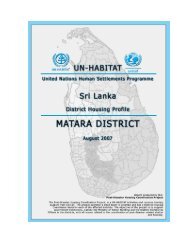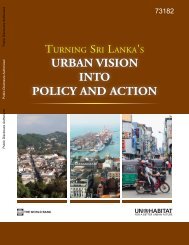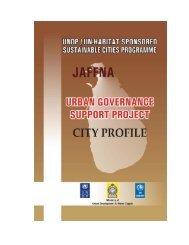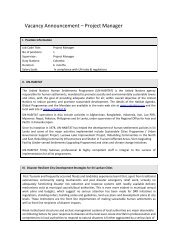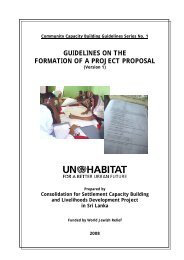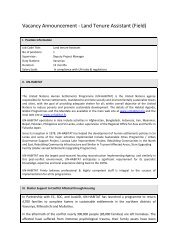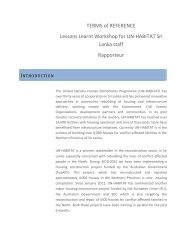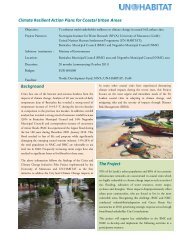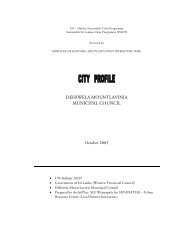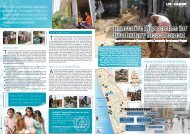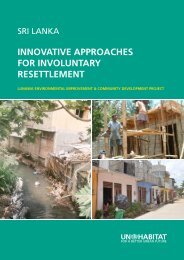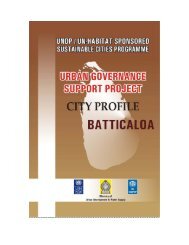Conference Proceedings : âJANASEVANAâ National ... - UN HABITAT
Conference Proceedings : âJANASEVANAâ National ... - UN HABITAT
Conference Proceedings : âJANASEVANAâ National ... - UN HABITAT
Create successful ePaper yourself
Turn your PDF publications into a flip-book with our unique Google optimized e-Paper software.
Any investment in housing has an effect on the national income of a country that goes beyond the direct<br />
investment itself. This is measured by an investment multiplier, the ratio of the change in national income<br />
to the initial change in the sectoral investment.<br />
Economic Perspective of Social Housing in Sri Lanka<br />
Dr. Ranjith Bandara, Senior Lecturer, Department of Economics, University of Colombo and<br />
Chairman, Sri Lanka Foundation Institute<br />
Social housing is an umbrella term referring to rental housing which may be owned and managed by the state, by nonprofit<br />
organizations, or by a combination of the two, usually with the aim of providing affordable housing. It can also<br />
be seen as a potential remedy to address housing inequality.<br />
Three broad approaches on social housing ‐‐ classified by Amzallag and Taffin (2003)<br />
• Institutional approach: Social rentals are owned and managed by social landlords (e.g. Municipal bodies, nonprofit<br />
corporations or associations), legally endorsed task to provide affordable dwellings;<br />
• Public assistance approach: Rentals are social whenever they get preferential land assignments, subsidies or<br />
tax allowances or public guarantees, mostly tied to rent regulation, means testing, profit constraints;<br />
• Household resources approach: Social rentals are defined as “below market rent” dwellings, open to<br />
households who cannot satisfy their housing needs on a free market.<br />
In South Asia, although high‐income groups do not face issues of housing shortages, they are a major cause for<br />
concern among middle and low‐income groups. This is the result of rapid population growth, increased urbanization,<br />
high income inequality, and displacement of people due to natural disasters and conflict. Large‐scale slums and<br />
informal settlements that prevail in almost all South Asian countries underline the urgency of meeting the demand for<br />
homes. There is a shortage of more than 38 Mn housing units in the region, not counting housing needs of repair or<br />
replacement. Taking into account the average household size, this translates to 212.5 Mn homeless people, which<br />
amounts to 14% of a total region’s population of 1.5 Bn. According to World Development Indicators of 2009, a<br />
<strong>Conference</strong> <strong>Proceedings</strong> – <strong>National</strong> Housing Symposium 8



